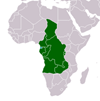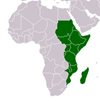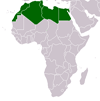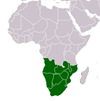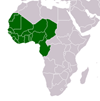State of Democracy:Trends from eight pilot countries: an overview of Democracy Assessment Reports in Bangladesh, ElSalvador, Italy, Kenya, Malawi, New Zealand, Peru and South Korea
State of Democracy:Trends from eight pilot countries: an overview of Democracy Assessment Reports in Bangladesh, ElSalvador, Italy, Kenya, Malawi, New Zealand, Peru and South Korea
This short report aims to give an overview of the findings in the pilot phase of International IDEA's State of Democracy project. The present material is drawn from the up-coming "Volume II" of the Handbook on Democracy Assessment, and is one of the products of the ambitious research project established by the Institute in 1999. The aim of the project, called The State of Democracy, is to initiate a global survey of the condition of democracy and its progress, both on a country-by-country basis and also comparatively. A key feature of the project has been the development of an original research framework and method for the systematic assessment of any country's democracy, to be used by partners in the country concerned. This framework and method was involved with the assistance of international experts from every region of the world, and is intended to be as applicable to long established democracies as to developing or transitional ones. It has now been successfully tested in a pilot phase in eight countries from Africa, Asia/Pacific, Europe and Latin America. Each of the research groups has now produced a full report on the condition of democracy in their country, and these reports are being published in-country as a contribution to public debate and to assist the process of political reform. The comparative volume on what this report is extracted has three purposes. The first is to bring the eight assessments together in one volume in summary form, so that they are available to a wider readership. These summary assessments form the bulk of the volume. The fact that they use a similar format, following the fourteen sections of the framework in turn, gives an internal coherence to the collection, .... though the countries differ widely and the findings of their respective research teams also differ in content, emphasis and presentation. The second purpose of the volume is a comparative one. Comparison of a number of countries can itself different purposes: to establish a range variation, to identify individual distinctiveness, to draw out common features, and many more. What we are not interested in is drawing up a league table of the eight countries across the different aspects of democracy covered; they differ too widely for that to make sense. Their more appropriate comparators would be with their regional neighbours or with some point in their own past, or both. The point of the tables which form the final chapter of the volume is to establish some key democratic indicators for each of the fourteen dimensions of democracy, and to use them to give a snapshot' of each country's condition which will complement the more discursive treatment of the assessment summaries. We hope that others can use these indicators in the assessment of a wider range of countries. The third purpose of the volume is to draw out from the individual country assessments some general conclusions about the democratisation process to date, its achievements and difficulties. Many of the difficulties are ones that are shared with longer established democratic systems, albeit experienced in a more acute form. Others are more specific to countries in transition. These general conclusions will be summarised in this introductory chapter, which begins by asking about the purpose of democracy assessments, and the method used in the pilot studies. How did the countries for the pilot phase of the project come to be selected? Somewhat randomly, if the truth be told. We decided to exclude federal states because of their complexity, and states for which no plausible claim could be made to democratisation, because of their inappropriateness. We the selected a range of different regions and countries. Obvious omissions from the list, such as countries from East-Central Europe or the former Soviet Union, would be more worrying if this claimed to be a comprehensive survey, rather than the pilot testing of a methodology. We included two longer established democracies for a number of reasons: to convince ourselves that the framework could be used anywhere;to show that no country is perfect.
CITATION: International Institute for Democracy and Electoral Assistance (IDEA). State of Democracy:Trends from eight pilot countries: an overview of Democracy Assessment Reports in Bangladesh, ElSalvador, Italy, Kenya, Malawi, New Zealand, Peru and South Korea . Stockholm : International Institute for Democracy and Electoral Assistance (IDEA) , 2001. - Available at: https://library.au.int/state-democracytrends-eight-pilot-countries-overview-democracy-assessment-reports-bangladesh-5

